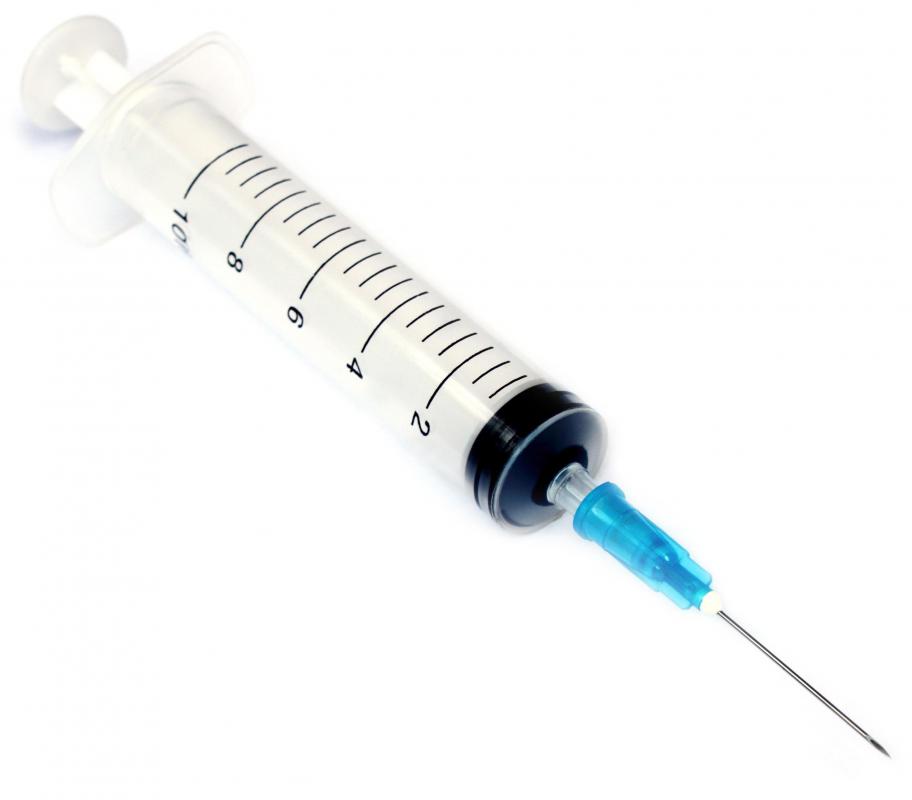At TheHealthBoard, we're committed to delivering accurate, trustworthy information. Our expert-authored content is rigorously fact-checked and sourced from credible authorities. Discover how we uphold the highest standards in providing you with reliable knowledge.
What Causes Keloids on the Ear?
Keloids on the ear occur as a result of excessive scar tissue growth after an ear injury or surgical incision. The tissue growth continues beyond that necessary for normal healing. The keloid appears as a raised, firm red scar and may continue growing for a prolonged period of time. It may itch or feel sensitive during the period of growth, though additional medical attention usually is not required.
Keloids on the ear are common after ear piercings, around acne pustules or chickenpox, and at the site of minor scratches, particularly in people prone to keloids. A family history of keloidosis is often present in people experiencing the hypertrophic scars. Older children and teens — those ages 10 to 20 — and some minority groups are more susceptible to developing keloids after a skin injury.

Exposure to the sun is known to cause discoloration of keloids on the ear and other locations exposed to direct sunlight. The discoloration can cause the scar tissue to look worse than it otherwise would. Keeping the area covered with a bandage and sunblock for six to 18 months can prevent extreme discoloration resulting from sun exposure. In some cases, the keloid itself will reduce in size after a few years.

Medical attention is generally not necessary for treatment of keloids, although a doctor may perform a biopsy or other procedure to ensure the lump is not cancerous or the result of a tumor. In some cases, the keloid can be reduced in size with freezing, radiation, laser or corticosteroid treatments. Surgical removal is a last resort that may be an option, although there is no guarantee the keloid will not return. Surgical removal may also cause the keloid on the ear to grow larger then it was pre-surgery.

People who are prone to keloids may find it helpful to apply imiquimod cream to the skin after an injury to prevent excessive scar tissue growth. Keloid formation is not limited to ear injuries and may form anywhere on the body. People susceptible to keloidosis may experience multiple keloid scars after any type of skin injury or surgery, including minor and major lacerations, burns, vaccinations and other types of injuries that break the skin. Only a qualified medical professional can diagnose and treat keloids. Anyone who suspects the growth of keloids on the ear or other area of the skin should consult with a medical professional to rule out other possible causes.
AS FEATURED ON:
AS FEATURED ON:














Discussion Comments
Do keloids on the ear develop more slowly than keloids on other parts of the body?
My sister developed keloid scarring on her ear piercing nine months after she got it. Isn't this abnormal?
@simrin-- I don't think that the string method is a good idea for keloids because keloids are very different than skin tags. They're made up of dense scar tissue and cutting off blood supply to a keloid to make it dry out and fall off is much harder than doing the same for a skin tag. Plus, the keloid will probably come back afterward.
I had a very ugly looking ear keloid too. It started with an ear boil from an ear infection. The boil popped and I had to take antibiotics. While it was healing, it formed a large keloid. I had the keloid surgically removed but it came right back. I'm just leaving it alone now.
Is keloid removal possible at home?
I have a small keloid due to an ear piercing. It doesn't hurt, it just looks weird. I know that skin tags can be removed at home with the string method. Will the same method work for a small keloid? Or is that risky?
Post your comments